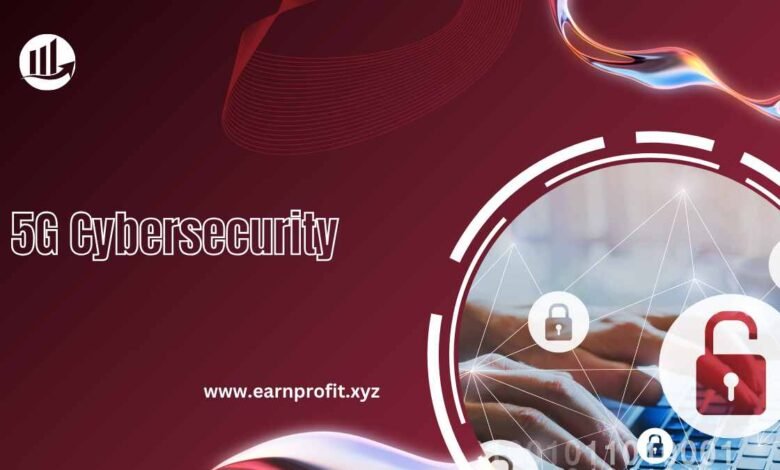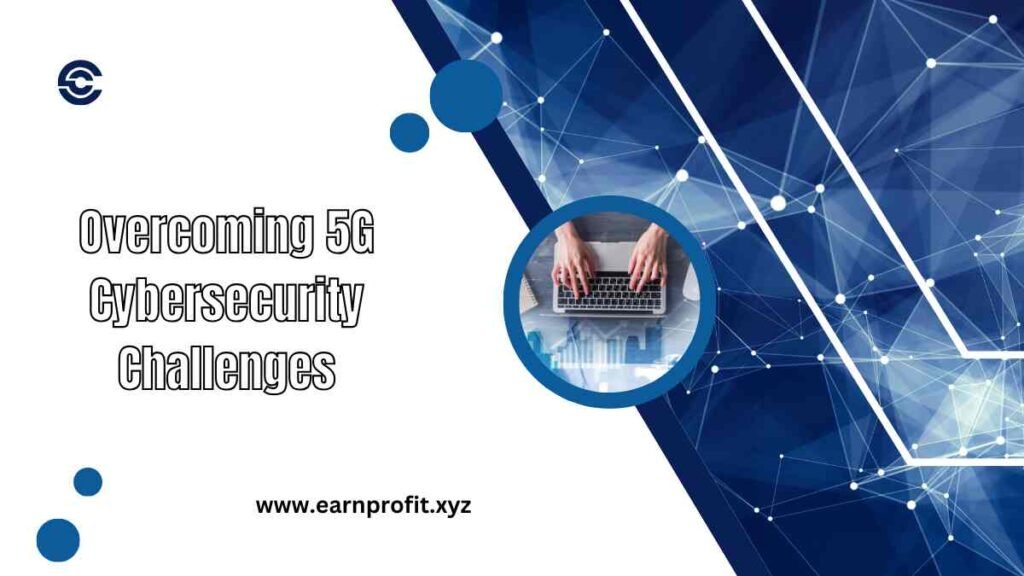5G Cybersecurity: How to Protect Next-Generation

5G cybersecurity rapidly rolls out across the globe, transforming industries from healthcare to transportation, cybersecurity has become a critical concern. The vast potential of 5G is accompanied by new risks, creating unique security challenges. Understanding how to secure 5G networks is essential for safeguarding the sensitive data transmitted through these networks and protecting users from potential cyber threats. This article explores the key aspects of 5G cybersecurity, including 5G network security, IoT security in 5G, 5G data encryption, 5G infrastructure vulnerabilities, and 5G security protocols.
The Importance of 5G Network Security
5G, the fifth-generation mobile network, promises faster speeds, lower latency, and higher capacity than previous generations. However, the advancement of this technology also expands the attack surface for cybercriminals. As 5G networks become integral to industries and critical infrastructure, securing these networks becomes more challenging.
5G network security
Pivotal because the technology will power not just smartphones but also IoT devices, smart cities, and autonomous vehicles. With such extensive integration, a security breach could have severe consequences, affecting a range of systems simultaneously. Cyberattacks on 5G networks could disrupt public services, financial institutions, and healthcare systems, making comprehensive 5G security strategies essential.
Must Visit: Earn Profit
IoT Security in 5G
One of the most transformative aspects of 5G is its ability to support the Internet of Things (IoT). IoT devices, from smart home systems to industrial sensors, are expected to proliferate as 5G enables faster and more reliable connections. However, this vast expansion of connected devices introduces significant security risks. IoT security in 5G is particularly important due to the diverse nature of IoT devices. Many of these devices are low-power and may not have robust security features, making them attractive targets for hackers. Weak IoT security could allow cybercriminals to exploit 5G networks, leading to data breaches or system manipulation. Addressing these risks requires a multi-layered approach to security that includes device-level protection, secure network protocols, and continuous monitoring.
Role of 5G Data Encryption

One of the most fundamental security measures for protecting information transmitted over 5G networks is encryption. Encryption ensures that data is rendered unreadable to anyone who does not possess the necessary decryption keys, making it a crucial component of cybersecurity.
Can blockchain technology 5G cybersecurity?
Blockchain technology can enhance 5G cybersecurity in several ways
Decentralized security
Blockchain’s decentralized nature makes it harder for attackers to compromise a network by attacking a single point of failure.
Immutable records
Blockchain can create immutable, tamper-proof records of network activity, improving auditing and accountability.
Secure data sharing
Blockchain can enable secure, encrypted sharing of data between devices in a 5G network, especially in IoT environments. However, the integration of blockchain in 5G networks is still in its early stages, and further development is needed to fully realize its potential.
5G data encryption
involves applying advanced cryptographic techniques to safeguard data in transit. Given the high volume of data that will flow through 5G networks, encryption becomes even more critical. Hackers may attempt to intercept data as it travels across the network, especially in cases where sensitive information, such as financial transactions or personal identifiers, is involved. End-to-end encryption can mitigate these risks by ensuring that only the sender and recipient can decrypt and access the information. However, as encryption algorithms evolve, so too do the tactics employed by hackers, requiring continuous updates and improvements to encryption protocols.
5G Infrastructure Vulnerabilities
The architecture of 5G networks introduces new 5G infrastructure vulnerabilities that differ from those seen in previous generations of mobile technology. One of the key concerns is the virtualization of network functions, which allows operators to run multiple services on the same hardware. While this increases efficiency, it also creates additional entry points for attackers. A cyberattack targeting these elements of the network infrastructure could lead to widespread service outages or data breaches. For example, hackers could manipulate SDN controllers to reroute traffic or interfere with network management functions. Physical vulnerabilities are another concern, as 5G networks require a denser infrastructure of small cell towers and base stations.
The Need for Robust 5G Security Protocols
To address the security challenges posed by 5G, strong 5G security protocols are essential. These protocols define the rules for securing data transmission, authenticating users, and managing network access. In 5G networks, security protocols need to be more robust and adaptive than those used in previous generations. Due to the increased complexity and scale of 5G systems. One of the primary 5G security protocols is the 5G Authentication. This protocol offers enhanced protection compared to 4G, including better privacy features and stronger encryption algorithms . Another critical aspect of 5G security protocols is securing the control plane, which manages how data flows through the network.
Overcoming 5G Cybersecurity Challenges

The rapid expansion of 5G networks and the integration of IoT devices present both opportunities and challenges. While 5G offers incredible potential for innovation, it also demands a new approach to cybersecurity. Addressing the risks of 5G network security, IoT security in 5G, 5G data encryption, 5G infrastructure vulnerabilities, and 5G security protocols requires collaboration between network operators, device manufacturers, and regulators. Governments and industries are beginning to establish standards and regulations to ensure the security of 5G networks. For instance, the National Institute of Standards and Technology (NIST) has developed guidelines for 5G cybersecurity, focusing on securing the supply chain, improving encryption standards, and enhancing network resiliency. As 5G networks evolve, so too will the tactics of cybercriminals.
Conclusion
5G technology is set to revolutionize communication and connectivity, but with great power comes great responsibility. The security challenges associated with 5G, from IoT security in 5G to 5G data encryption and 5G infrastructure vulnerabilities, require a comprehensive and multi-layered approach to cybersecurity. By implementing strong 5G security protocols and staying vigilant against emerging threats, we can ensure that the benefits of 5G are realized without compromising the safety and security of users and systems. As the world moves toward a 5G-enabled future, prioritizing cybersecurity will be essential to building trust in this transformative technology.
Read More : Best Search Engine Optimization Company





